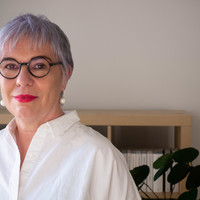Papers by Steven Woodward
Thinking in the Dark, 2019

This title traces the legacy of Krzysztof Kieslowski in films made after his death using his scri... more This title traces the legacy of Krzysztof Kieslowski in films made after his death using his scripts or ideas and in the work of other filmmakers. Polish filmmaker Krzysztof Kieslowski died unexpectedly in March 1996 at precisely the moment he had reached the height of his career and gained a global audience for his work with the "Three Colors" trilogy (1993-94). Since his death he has been hailed as one of the greatest and most influential directors of all time, elevated to the elite of world cinema alongside Jean Renoir, Robert Bresson, Federico Fellini, Yasujiro Ozu, Max Ophuls, and Andrei Tarkovsky. In "After Kieslowski", leading contributors diverge from the typical analysis of Kieslowski's work to focus on his legacy in films made after his death, including those based on his scripts and ideas and those made entirely by other filmmakers. Kieslowski's rich legacy is rooted in not only a very significant body of early work made before his breakthrough...

University of Toronto Quarterly, 1999
Munro. Discussions of 'The Love of a Good Woman' and the travel piece 'What Do You Wa... more Munro. Discussions of 'The Love of a Good Woman' and the travel piece 'What Do You Want to Know For' (from the PEN anthology Writing Away) are also included with the critical overview in the last chapter, disrupting its coherence. Perhaps Howells parallels the problems of closure she identifies in Munro in this last chapter, which ends, 'News of the forthcoming publication of The Love of A Good Woman arrived in the final proof stages of this study. With Munro, there is always a supplement.' Howells's greatest strength, however, is her very appreciation of the Derridian supplement, its challenge to closure and its opening up of space for interpretation. Rather than lamenting its challenge to the critic's project of fixing meaning, she celebrates its potential, thus opening up her own text in a welcoming engagement with her reader. (NATHALIE FOY)

I have never compromised in what I have done with what I think, what surrounds me. That's why... more I have never compromised in what I have done with what I think, what surrounds me. That's why my films cannot be taken out of the archives." Krzysztof Kies?lowski's untimely death came at the height of his career, after his Three Colors trilogy of films garnered international acclaim (and an Oscar nomination), and he had been proclaimed Europe's most important filmmaker by many critics. Born in 1941, he was only fifty-four years old when he died. Kies?lowski himself tried to tell the story of his life and career in the 1993 book Kies?lowski on Kies?lowski. This collection, by contrast, reveals the shifting voice of a filmmaker who was initially optimistic about his social and cultural role, then felt himself buffeted by the turbulent politics and events of the People's Republic of Poland. As described in the chronology in this book, he found himself subject to the "economic censorship" of post-Communist filmmaking. How Kies?lowski responded at each mom...

New Review of Film and Television Studies, 2017
Abstract Built around the three colors of the flag of the country from which its financing came, ... more Abstract Built around the three colors of the flag of the country from which its financing came, France, and linking these colors to that country’s political ideals of liberty, equality, and fraternity which are espoused by so many democratic states, Krzysztof Kieslowski’s Three Colors trilogy (1993-4) invokes these sociopolitical concepts, but at a personal level. Three Colors: Blue (1993) features a protagonist, Julie (Juliette Binoche), a bereaved mother and wife, who tries to liberate herself from all of life’s suffering, ironically by isolating herself in a ‘blue’ state of mourning indefinitely. The color blue takes on a metadiegetic presence in the film, as the haunting spirit of Julie’s dead daughter, Anna, but Julie’s communing with this nebulous spirit in its variety of incarnations and forms connects her both with the animating music of her deceased composer husband and with Lucille (Charlotte Very), a sex worker. Together, they will eventually lead Julie back to the realm of the living. As with Kieslowski’s Decalogue series which invoke the Ten Commandments only to challenge their dogmatic and narrow interpretation, Three Colors: Blue and the other films of the trilogy toy with their structuralist pretexts – concepts linked to colors – precisely in order to undermine all schematic, inhuman, and deathly restrictiveness. Blue may be the color of mourning and despair, of day edging into the black of night, but we are reminded that it is also the color of joy and desire, the blue that infuses the rapturous dawning of a new day.
Http Dx Doi Org 10 1080 10509200690902296, Aug 15, 2007
From Hobbits to Hollywood: Essays on Peter Jackson's Lord of the Rings, ed. Ernest Mathijs and Murray Pomerance (Amsterdam and New York: Rodopi, 2006), pp. 189-214., 2006
University of Toronto Quarterly, 1999
Quarterly Review of Film and Video, 2008
Quarterly Review of Film and Video, 2006
Until 1989, Poland was, rather awkwardly, both a Catholic and communist state. And Polish filmmak... more Until 1989, Poland was, rather awkwardly, both a Catholic and communist state. And Polish filmmakers have been judged, it seems, according to how they negotiated the political and religious dogma of their country while finding the means to address the social reality of ...
Quarterly Review of Film and Video, 2007
To the film enthusiast for whom European cinema is primarily represented by its great auteurs and... more To the film enthusiast for whom European cinema is primarily represented by its great auteurs and its art-cinema traditions, Alternative Cinema: Eurotrash and Exploitation Cinema since 1945 will come as a long-overdue tonic. In this second volume in Wallflower's ...
Modernism/modernity, 2007











Uploads
Papers by Steven Woodward